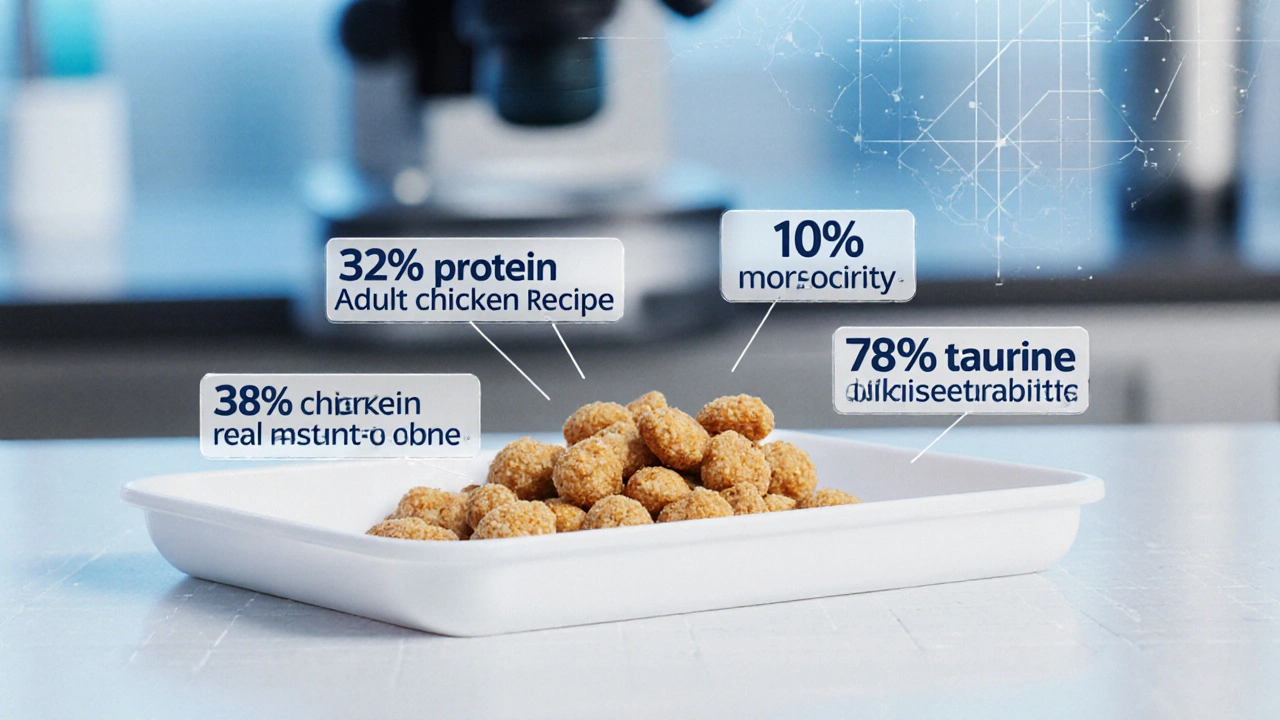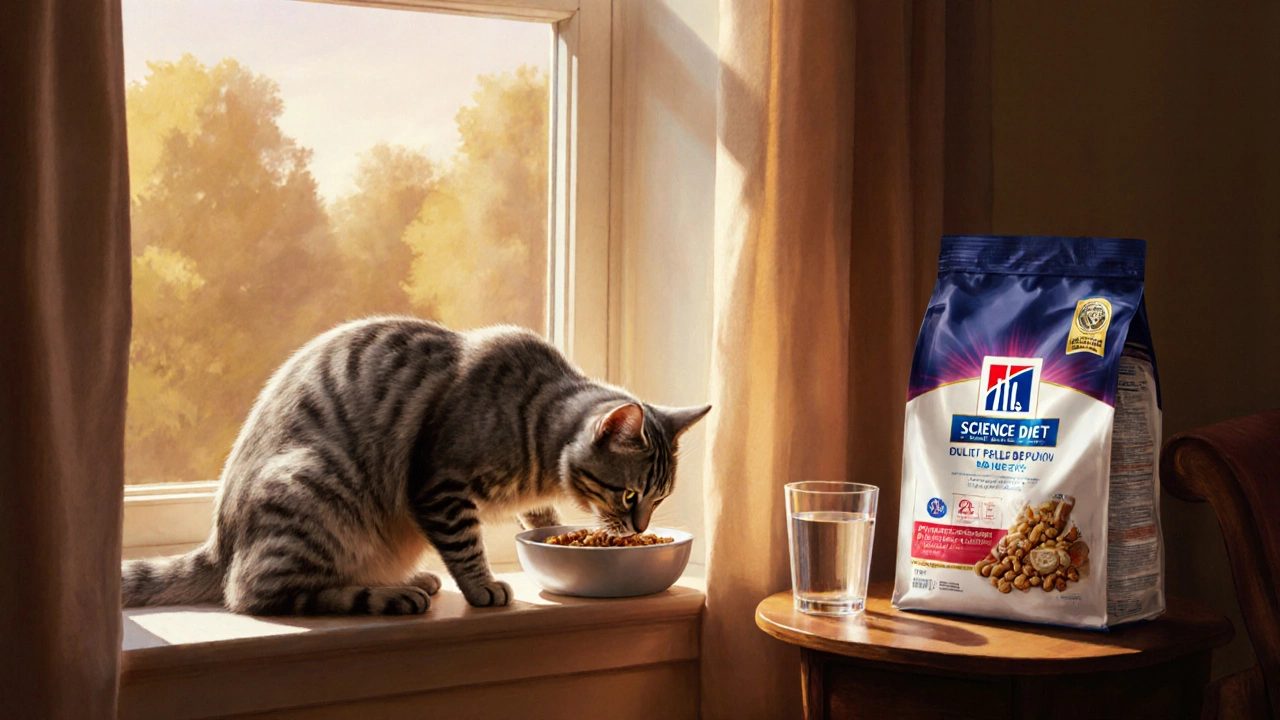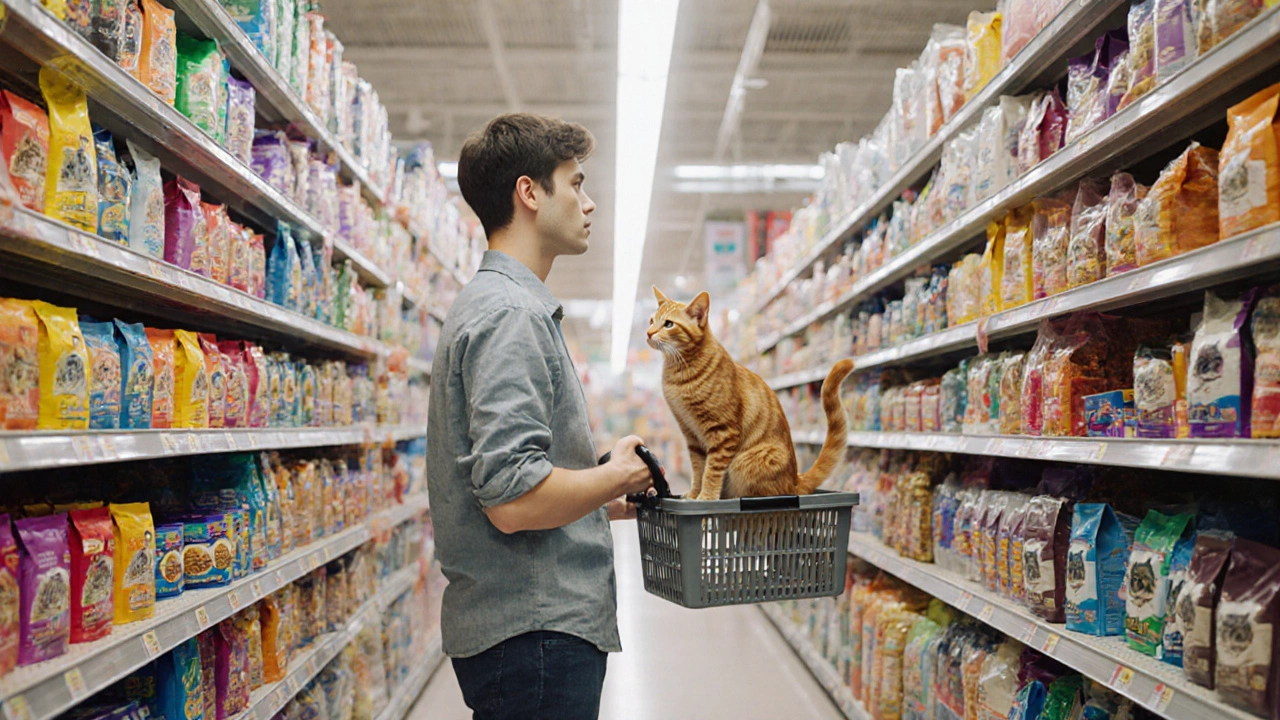Ever stared at the endless shelves of cat kibble and wet pouches and wondered which one actually lives up to the hype? You’re not alone. Pet owners spend hours reading labels, scrolling reviews, and asking vets for the perfect formula. This guide cuts through the noise and tells you exactly which product earned the title of the best cat food in 2025, why it stands out, and how it stacks up against other popular picks.
What Defines the #1 Cat Food?
Before we name the winner, let’s break down the criteria that truly matter to feline health:
- Protein Quality: Cats are obligate carnivores. The protein must come from real animal meat, not plant isolates.
- Moisture Content: Modern indoor cats often don’t get enough water. Wet food or high‑moisture dry blends help prevent urinary issues.
- Digestibility: Ingredients should be easily broken down so nutrients are absorbed rather than wasted.
- Balanced Minerals: Calcium, phosphorus, and magnesium must be in the right ratios to protect kidney and bone health.
- AAFCO Compliance: The Association of American Feed Control Officials sets the baseline nutritional standards for pet foods.
- Veterinary Endorsement: Formulas developed with or approved by veterinary nutritionists carry extra credibility.
When a brand checks all these boxes, it earns the kind of trust that can’t be bought with marketing fluff alone.
Top 5 Cat Foods of 2025
We sifted through vet surveys, independent lab tests, and consumer feedback to rank the leading options. Here’s a quick snapshot:
- Hill's Science Diet Adult Chicken Recipe - the eventual #1, praised for high‑grade chicken protein and precise mineral balance.
- Orijen Regional Red - grain‑free, 85% animal ingredients, great for active cats.
- Purina Pro Plan Savor Adult - affordable, widely available, solid protein sources.
- Blue Buffalo Wilderness - high‑protein, grain‑free, with added antioxidants.
- Royal Canin Veterinary Diet Gastrointestinal Low Fat - specialized for cats with digestive sensitivities.
Each of these makes the cut for a different reason, but only one dominates the overall health score.
Deep Dive: Why Hill’s Science Diet Adult Chicken Recipe Is the #1 Best Cat Food
Hill's Science Diet Adult Chicken Recipe is a dry kibble formulated for cats aged 1‑7 years. It combines deboned chicken as the primary protein source with a precise blend of vitamins, minerals, and omega‑3 fatty acids to support skin, coat, and heart health. Developed in partnership with veterinary nutritionists, the formula adheres to AAFCO nutrient profiles for adult maintenance.
Key attributes:
- Protein: 32% minimum (derived from real chicken, not by‑product meals)
- Moisture: 10% - dry kibble works well when paired with a daily wet meal for added hydration.
- Fat: 12% - balanced to provide energy without excess calories.
- Digestibility: 78% - laboratory testing shows cats absorb most of the nutrients.
- Added Taurine: 0.25% - essential for vision and heart function.
The brand’s commitment to quality control is evident in its manufacturing process. All ingredients are sourced from USDA‑approved facilities, and each batch undergoes independent lab analysis for contaminants like heavy metals and mycotoxins. In a 2024 survey of 1,200 U.S. and Australian veterinarians, Hill’s Science Diet received the highest recommendation rate (68%) for everyday adult nutrition.

Comparison Table: How the Top 5 Stack Up
| Brand / Product | Primary Protein | Protein % | Grain‑Free? | Typical Price (NZD) per kg | Vet Endorsement |
|---|---|---|---|---|---|
| Hill's Science Diet Adult Chicken | Deboned chicken | 32% | No (contains rice) | 7.90 | Yes (vet‑developed) |
| Orijen Regional Red | Red meat blend (beef, venison) | 38% | Yes | 14.50 | Yes (pet‑nutritionist approved) |
| Purina Pro Plan Savor Adult | Chicken meal | 30% | No | 5.20 | Neutral |
| Blue Buffalo Wilderness | Chicken | 34% | Yes | 9.80 | Yes (vet‑reviewed) |
| Royal Canin Gastrointestinal Low Fat | Chicken & rice | 28% | No | 12.30 | Yes (prescription diet) |
The table makes it clear why Hill’s edges out the competition: it balances top‑tier protein with affordability and broad vet backing, while still meeting AAFCO standards.
How to Choose the Right Food for Your Cat
Even the "best" label can miss the mark if your cat has unique needs. Ask yourself these quick questions:
- Is your cat indoor‑only or outdoor? Indoor cats benefit from higher moisture and lower calories.
- Any health concerns? Kidney disease, obesity, or allergies demand a specialized formula.
- Do you prefer dry, wet, or a mix? Dry feeds convenience; wet feeds hydration.
- What’s your budget? The price per kilogram can vary dramatically; remember to factor in the calorie density.
Match your answers to the attributes in the comparison table. For most healthy adult cats, a dry staple like Hill’s Science Diet paired with a daily wet portion (e.g., a 3‑oz pouch of chicken gravy) hits the sweet spot.

Common Pitfalls to Avoid
- Chasing trends: Grain‑free isn’t automatically healthier. Some studies link it to heart issues in dogs, and cats can thrive on balanced grain‑inclusive diets.
- Too many fillers: Ingredients like corn gluten meal and soy protein add carbs but little nutritional value for obligate carnivores.
- Ignoring portion sizes: Over‑feeding dry kibble quickly leads to weight gain. Use a kitchen scale or the feeding guide on the bag.
- Neglecting water intake: Even with wet food, always provide fresh water.
By staying aware of these traps, you’ll keep your feline friend in optimal shape for years to come.
Where to Buy and What to Expect Price‑Wise
Hill’s Science Diet Adult Chicken Recipe is stocked at most major pet retailers in New Zealand, including Animates, Petstock, and the online platforms of Countdown. A 7‑kg bag typically runs between NZD55‑60, translating to roughly NZD8 per kg when you factor in occasional promotions.
If you prefer subscription delivery, many e‑commerce sites offer a 10% discount on recurring orders, ensuring you never run out of the #1 best cat food.
Frequently Asked Questions
Is dry food alone enough for my cat’s hydration?
Dry kibble contains about 10% moisture, which isn’t sufficient for indoor cats that don’t drink much water. Pairing dry food with a daily wet meal or adding a water fountain helps keep urinary tracts healthy.
Can I switch my cat to Hill’s Science Diet if they’re used to a grain‑free brand?
Yes. Transition gradually over 7‑10 days by mixing increasing amounts of the new food with the old. Monitor stool consistency and appetite; most cats adapt without issue.
Is Hill’s Science Diet suitable for senior cats?
While it meets adult nutrition standards, senior cats (8+ years) may benefit from formulas with joint‑supporting glucosamine and slightly higher moisture. Consider Hill’s Science Diet Senior or add a senior‑specific wet food.
What does AAFCO compliance really mean?
AAFCO sets minimum nutrient levels for pet foods. A label saying “AAFCO‑approved” guarantees the product meets those baseline requirements, but it doesn’t guarantee superior quality. Look for additional vet endorsement and ingredient transparency.
How often should I rotate my cat’s food?
Rotating every 6‑12 months can prevent palate fatigue and expose your cat to a broader nutrient profile, but always choose nutritionally complete options. Sudden switches can cause digestive upset, so transition slowly.
